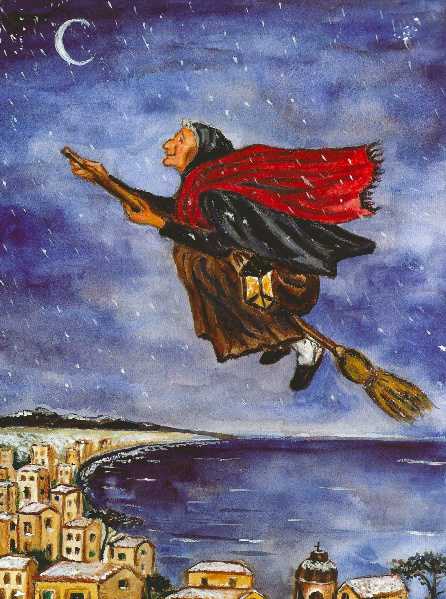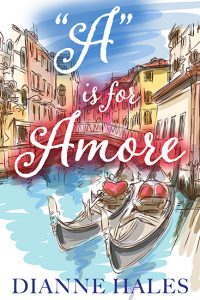
Long after many Americans have taken down their Christmas trees and packed away the decorations, Italians continue to celebrate. The final feast is l’Epifania, on January 6, which commemorates the arrival of i re magi, the three kings who followed the bright Christmas star (stella cometa) to bring gifts for Baby Jesus (bambino Gesù).
Italian children traditionally received their presents on Epiphany rather than Christmas. However, as Babbo Natale (Father Christmas) has become more popular in Italy, youngsters often get gifts on both holidays — if they’ve been good.
The job of delivering nice gifts to good children and cenere e carbone (ashes and coal) to naughty ones belongs to la Befana, a good-hearted but very ugly witch. Her name comes from befania, a corruption of the Greek word epifania, which means apparition or manifestation. Outside its Epiphany context, befana refers to an ugly woman.
According to one legend, the Magi stopped by Befana’s house and invited her to accompany them on their trip to Bethlehem. She refused because she had too much housework. Regretting her decision, Befana gathered presents in a bag, hopped on her broomstick and took to the skies. Unable to pick up the trail, she stopped at every house along the way to leave gifts, just in case the Christ Child was there.
The towns and regions of Italy developed different local traditions. Some set up a living crèche, with the village’s newest baby in the role of Jesus. In others three children dressed as the Magi with a golden star atop a pole sang pasquelle (little songs) about the three kings as they paraded through the streets.
In Friuli in northern Italy, families gathered around a big Christmas log that had been burning for twelve days in a special raised hearth called a fogolar. Others lit giant bonfires in their fields. The Friulians believed these Epiphany fires—called pan e vin (bread and wine) in some places and vecja (“old one” in dialect) in others–lit the way for the three Magi en route to Bethlehem.
Throughout Italy January 6 marks the end of the long holiday season. “L’Epifania,” an old saying goes, “tutte le feste si porta via.” (Epiphany carries away all the holidays.) However, another festival—the pre-Lenten Carnevale—isn’t far away. As a dialect proverb says, “Dopo le sante feste de Natal, le santissime de carnaval!” (After the holy feasts of Christmas, the most holy ones of carnival!)
Italian children memorize verses about la Befana and recite them for their families. Here is one of the best known:
La Befana vien di notte / con le scarpe tutte rotte / con le toppe alla sottana: / Viva, viva la Befana!
La Befana comes in the night / With shoes completely broken / With her skirt all in tatters. Hurray, Hurray, la Befana!
Dianne Hales is the author of LA BELLA LINGUA: My Love Affair with Italian, the World’s Most Enchanting Language; LA PASSIONE: How Italy Seduced the World; MONA LISA: A Life Discovered; and “A” Is for Amore, which you can download for free at diannehales.com.







